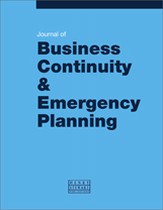Strategic dilemmas when managing cyber attacks
Abstract
Cyber attacks have a significant business impact, with the potential to escalate into crises if poorly managed. A recurring pattern is strategic dilemmas that cannot be resolved satisfactorily. Some dilemmas are more pronounced, others less so, and therefore often catch decision-makers unprepared, leaving only bad options for decision-making. Something that all dilemmas have in common is that the associated decisions can have a lasting impact on relationships with stakeholders. This paper introduces four recurring dilemmas; shows the typical considerations; lists options for mitigating these dilemmas; and describes the basic requirements for implementing mitigations. The dilemmas and options, in turn, are rooted in the organisation-specific design of: cyber security incident management and response; IT service continuity and disaster recovery management; business continuity management; and crisis management and communication.
The full article is available to subscribers to the journal.
Author's Biography
Holger Kaschner is a Director at DCSO, the German Cyber Security Organisation. He supports corporations, small to medium-sized enterprises, and authorities in dealing with crises as well as implementing and optimising disaster recovery, business continuity and crisis management. Kaschner holds various professional certifications (including CISM, Lead Auditor ISO/IEC 22301 and 27001, and ISO/IEC 27032 Lead Cyber security Manager) and is a member of Beta Gamma Sigma, the international honour society for outstanding academic achievements. His book Cyber Crisis Management — The Practical Handbook for Crisis Management and Crisis Communication will be published in a new edition by Springer Verlag in 2024 and is considered essential reading in German-speaking countries.
Citation
Kaschner, Holger (2024, June 1). Strategic dilemmas when managing cyber attacks. In the Journal of Business Continuity & Emergency Planning, Volume 17, Issue 4. https://doi.org/10.69554/FIEX4257.Publications LLP
